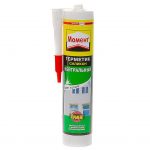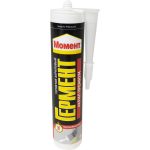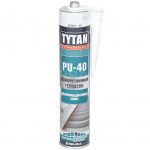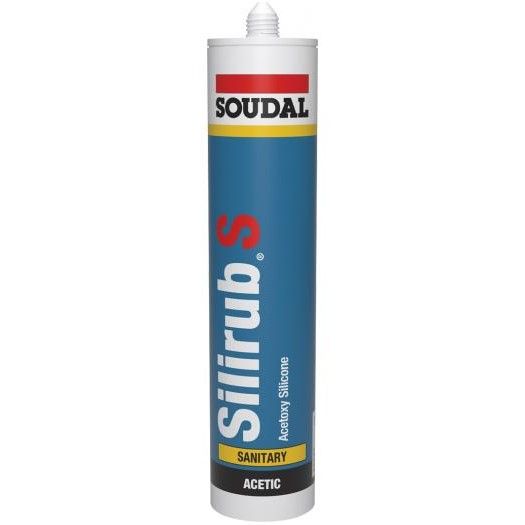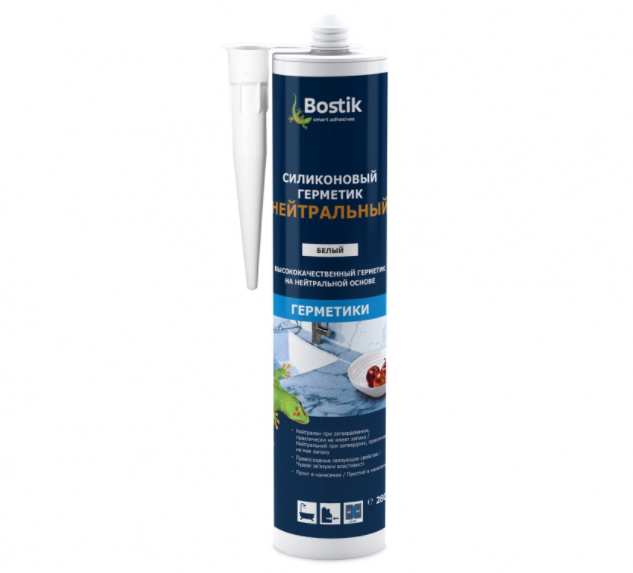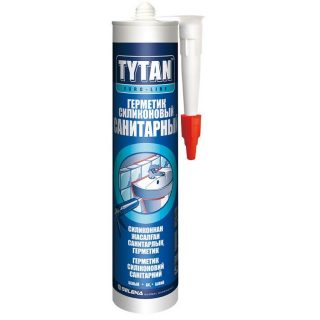When installing bathtubs, toilets, washbasins, you cannot do without a sealant. The composition closes the gaps that appear during installation between the plumbing and the floor, pipes and the wall. Not all mixtures are suitable for this.
Description and properties of toilet sealant
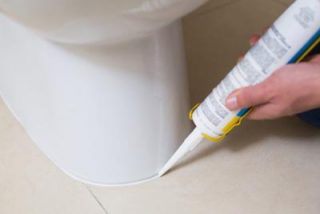
The operating conditions in the bathroom and toilet are not the simplest ones. Pretty high humidity causes condensation at joints and crevices. It accumulates dust and dirt, conditions are formed at the joints, favorable for the active reproduction of bacteria, fungi and mold. Since the temperature in these rooms is either high or low, moisture accumulates in the joints especially quickly.
Another feature is leakage probability... Even the most correct installation involves sealing the joints and ensuring waterproofing of all joints. Previously, seals were used for this. However, such materials quickly deteriorate. Sealants - acrylic, silicone - last much longer and prevent leaks.
The sealant is required attractiveness... Black or gray trimming of the joints is not the best option in apartments where all rooms are decorated with style and taste.
There is no special sealant for plumbing. However, there are a number of formulations with optimum performance in these conditions.
Varieties of sealants
For sealing joints in bathrooms, use one-component formulations... They do not require preparatory work, are insensitive to temperature, and quickly harden when dried. Their composition is varied.
- Acrylic - only waterproof ones are used. Such mixtures do not allow water to pass through and are not damaged by the formation of condensation.
- Silicone Toilet Sealant is the best option for bathroom and toilet. Pastes are very resistant to temperature extremes, high humidity, and do not have a pungent odor. The silicone mixture is suitable for working with metal, tiles, tiles.
- Polyurethane - elastic moisture-proof composition, characterized by high wear resistance, durability, tightness. However, such mixtures are toxic; they are rarely used for internal work and with great care.
When choosing, take into account not only the composition, but also the pH of the mixture, as this affects the properties and operating conditions.
Acidic
Include acetic acid. Cheap, practical, very reliable. Used for the installation of ceramic toilets, plastic structures. Not suitable for steel and stone products. They have a pungent sour smell, so after hardening, the room will have to be ventilated for a long time.
Acidic compositions dissolve quite easily with concentrated vinegar essence, so it is not difficult to remove them.
Neutral
Compositions based on alcohol solutions. They have good adhesion to almost all materials and are used when working with stone, metal, tiles, glass.They retain their properties in a wide temperature range and practically does not lose elasticity over time. Neutral formulations are much more expensive.
Sanitary
- The sanitary sealant for the toilet must contain fungicides - substances that prevent the growth of bacteria and fungi, which reduces the likelihood of mold and unpleasant odors in the toilet.
- Increased elasticity funds. Movable assemblies can be connected with a sealant.
- Fast drying the composition gives minimal shrinkage, so that the seams exclude the possibility of leakage for a long time.
- Sealant does not contain toxic components... Safe and approved for residential use.
It is recommended to seal with a sanitary sealant not only the junction of the toilet bowl, but also the joints between the tiles, where water most often gets.
How to make a choice
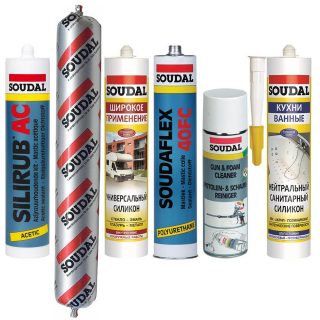
When buying a sealant, consider the following:
- The form - a tube with a nozzle is cheap and suitable for sealing a small number of seams. To work in large volumes, you need a cartridge for a gun
- Color - most often they take transparent and white mixtures. But there is an opportunity to pick up another shade.
- Shelf life - the closer it is to the end, the more viscous the composition becomes. Difficulties arise with the squeezing out of the product and its solidification. So a sealant with an expiring shelf life is not worth buying, even at a very large discount.
- Undamaged packaging - if the package is opened, the composition will dry in 3-4 days.
It is worth paying attention to the manufacturer. A well-known brand often guarantees high quality.
Application rules
Before installing the toilet, you should do the following:
- The installation site must be dry and clean. The sealant does not set well on wet surfaces and may not adhere.
- Recommended circle the installation site along the contour. The tile around the mark is covered with tape so that the composition does not fall on the tiled floor.
- Holes for anchors or bolts are drilled in advance and filled with sealant. This prevents water from entering the deck.
After preparation, proceed to the installation of the toilet, and then to the sealing of the seams.
Installation of a new toilet
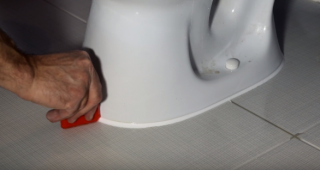
The procedure is as follows:
- The cartridge is inserted into a construction gun.
- Bring the nose of the nozzle to the seam, pull the trigger and squeeze out the composition so that it fills the joint. It is desirable that the sealant strip was continuous along the entire perimeter of the circuit... The surplus is immediately removed with a damp cloth or rag.
- After 5 minutes, a seam is formed. It should take an L-shape. You can do this with your hands in rubber gloves or use a spatula moistened with soapy water.
- Remove excess mixture again.
If you need to seal individual parts of the toilet, do the same.
The sealant sets in 20 minutes. At this time, you can correct the density and shape of the seam.
Application in old bathrooms
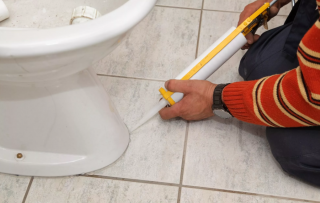
In the event of small leaks or damage to the seam, a partial repair is undertaken. Better to use for this silicone or polyurethane sealant, since they are characterized by self-adhesion.
- Junction cleaned from rust, dirt, plaque. The old sealant, which has lost its strength, is removed with a screwdriver or spatula.
- The surface is degreased.
- The cartridge is inserted into the gun, the new mixture is squeezed into the seam so that the composition penetrates as deeply into the seam as possible.
- The excess is removed and then a seam is formed.
If the remnants of the product have had time to harden, the irregularities and drops are cut off with a knife.


